Rendezvous

“I have often said that an intelligence officer has one task, one job, one mission. This is to tell his commander, his superior, today, what the [enemies] are going to do tomorrow. This is his job. If he doesn’t do this, then he’s failed.”
– Captain Joseph J. Rochefort, USN
I was having one of Willow’s specials off the Lunch Counter menu- the turkey matzo ball stew- and talking to Brian about growing up in Honolulu. He brought a couple ancient yellowed articles with him, papers his Dad The Chief had saved to recall the events of people he knew during the war.
One of them was about the second attack on Pearl Harbor, the one that was a military secret at the time, and was largely lost to history for years. I understand the reasons at the time. No point in getting everyone worked up again, and from a military perspective, once they figured it out, the staging base for the seaplanes at French Frigate Shoals was patrolled and denied to the Japanese. That also might have contributed to the lack of long-range patrol aircraft to look for the American fleet before the battle of Midway.
I dealt with all sorts of secrets in my Navy years- some large and some small. Some came with a fifty-year seal on them, and my pal The Good Doctor put his history of the program in the safe with a sigh, knowing no one would ever see the stories contained within.
There are still some things about Pearl Harbor that are under seal- and one can only wonder what will pop out when the 75-year window of secrecy expires in 2020.
We looked at the yellowing article in the Honolulu Advertiser. I remember the first time I heard of the second attack like it was yesterday.
Mac was 91 that year. He drove over to the Willow in the champagne-colored jaguar sedan from his residence at the Madison across the street and got his million-dollar parking space out front. I looked over at him in his aloha shirt. “So tell me how it all went down, Sir, just for the record. You have told the story a thousand times, but I want to bounce it off what Jasper and Eddie wrote about it later, and the oral history Joe Rochefort did in 1969. You are the only one who can put it all in context now.”
I was feeling expansive, pleasantly lit up with Willow’s current vintage of an insouciantly dry Spanish white that Big Jim the bartender would top off periodically. I felt that we had beaten the year of 1942 about to death. We had talked about Midway, and the growing intelligence organization, and the treachery of Wenger and the Redmans, and I was eager to get on to the Spring of 1943, since I was getting desperate to kill Admiral Yamamoto again.
“You know I went down to Honolulu on Christmas Day of 1942 and went through the barbed wire for a swim from the beach,” said Mac absently. “Then I wrote to the folks back in Iowa and told them about it. They would have been freezing then.”
American kids were dying in the jungles of the Solomon Islands. Hundreds of other kids had been blown to bits or drowned in The Slot in the see-saw battle for Guadalcanal as the Japanese ran the Tokyo Express in at night to bring reinforcements to the islands, and the Americans flew from Henderson Field by day. Back in Pearl, and Melbourne, Australia, the code-breakers labored eighteen and twenty hours a day to recover the values of the new five-group system imposed by the IJN.
The Admiral took a sip of his Virgin Mary and waved a colossal olive on the end of a toothpick at me. “They don’t talk about the second attack much, do they?”
I sighed. This interview was not going the way I had hoped. “What second attack? I know the Japs had used balloons to send incendiary devices to the Pacific Northwest to start forest fires, and they had submarine-carried seaplanes to attack the Panama Canal, but that didn’t happen.”
“Well, the second attack on Pearl Harbor did. It was on the 4th of March, 1942. Eddie Layton did some research after the war and discovered what had gone down, and it might have been Jasper’s fault.”
“What on earth do you mean,” I asked. “How could Jasper have helped the Japanese?”
“Well,” said Mac. “You know that Jasper was a pretty successful author. He wrote under the pen-name Alec Hudson.”
“Yeah, I know. I ordered a copy of “Up Periscope” the other day, and just started it. He writes well.”
“I have that one and his “Doubled-edged Secrets, both autographed,” said Mac. He smiled and reached down to his briefcase and produced a book with a black cover, the title superimposed in lines of gray. “This is the one I gave to my mother, and I got it back after she passed.” He opened it and showed me the inscription:
“To Hattie Showers
Whose son had a very
important part in these
events. With the compliments
of the author
W. J. Holmes”
“So what about the second attack,” I said after looking at the words. “I have never heard about that and I lived and worked in Pearl and thought I knew everything about it.”
Mac smiled. “It was two months after I arrived in the basement of Building One. Joe Rochefort was anxious about the possibility that the Japs might come back, and he was right. There was an article about it in Proceedings a few years ago, based on some research that Eddie Layton did in the 1950s, and a series of interviews that Joe Rochefort did in 1969. It was embarrassing, and that might be the reason people don’t talk about it much.”
“What happened?” I said, mystified.
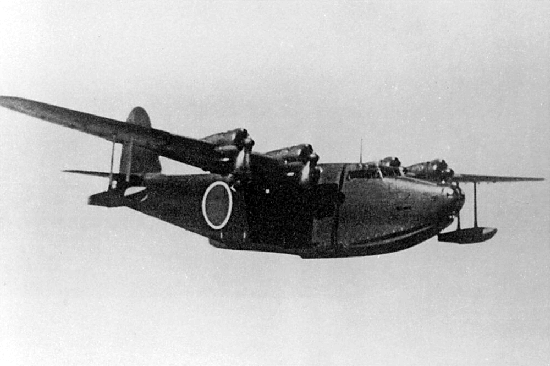
(Kawanishi H8K “Emily” class flying boat takes off. US Navy Photo)
“The Japanese decided to mount a follow-on attack against the shipyard at Pearl to destroy the big Ten-Ten Dry-dock. That would delay the repairs to the battleships, and increase the paranoia on the island. They envisioned an attack by five big Kawanishi H8K “Emily” class flying boats.
“Jesus,” I said. “And they pulled it off? Why isn’t that part of the big history?”
“Well, that is the interesting part. Eddie located the Japanese OpOrders and the pilot reports of the mission after the war. As it turned out, only two seaplanes departed the Marshalls, and they did refuel from a submarine milk cow in the vicinity of French Frigate Shoals. They then launched for Oahu, to bomb and conduct what Joe Rochefort described as an ‘armed reconnaissance’ mission.”
“And there was no response, only four months after the biggest disaster in American military history? No warning?”
“Oh, there was warning all right. We had penetrated JN-25 enough at that point to know that something was up, but there was heavy overcast the night of the 4th of March and the Japanese got lost. The two Japanese planes wandered around over the island but the blackout was effective, and one of the planes dropped bombs on Tantulus, which produced a couple large craters and broke some windows at Roosevelt High School. Eddie thought the other plane must have dropped its bombs over the ocean.”
“That was it?” I asked. My wineglass stood empty next to the notepad. My pen was making exclamation points next to the words “Second Attack on Pearl: no response!!!!!”
“The submarine I-23, the weather reporting unit, disappeared while on patrol and never arrived on station. So the weather was bad, the planes never found Pearl Harbor, and there were two explosions in the night that the next day the Navy and the Army blamed on each other for dumping ordnance irresponsibly.”
“Good God, that would have been hugely embarrassing if word got out that the Japanese came back and were not intercepted.”
“Joe Rochefort said it this way,” Mac said, pulling a folded article out of the back of his copy of Double Edged Secrets. He unfolded it and peered over his glasses. “He had passed a warning to the 14th Naval District, the Hawaiian Sea Frontier Commander, and to CinCPac. This is from the interview he did with Commander Ette-Belle Kitchen in 1969.”
He began to read in a voice just loud enough to be heard over the din in the Willow bar:
“I was told later by informed people that the attack was made, as I say, more or less unmolested, because the Navy had no airplanes at that time capable of repelling this attack or destroying the incoming aircraft. The Army said that they only had one-place fighters, and who could expect a fighter pilot to not only fly the plane in darkness but also to approach and make an attack on any enemy plane. Therefore, nothing had been done about it, and no action was taken.”
“My God.” Mac smiled at me and handed the paper over. I looked at the rest of what Joe Rochefort felt then:
“I just threw up my hands and said it might be a good idea to remind everybody concerned that this nation was at war….It’s not a very glorious incident. You won’t find very many references to this anywhere along the line.”
I re-folded the article and slipped it back in the book.
“That certainly beats me,” I said. “So that was the end of it?”
“No,” said Mac. “They planned on trying it again before Midway, but Admiral Nimitz dispatched a couple seaplane tenders to French Frigate Shoals, and the Japanese wouldn’t risk it. That meant they lost a chance to see what we were doing before the Midway battle in June.”
“Amazing,” I said. “That is just one of the reasons I enjoy talking to you so much.”
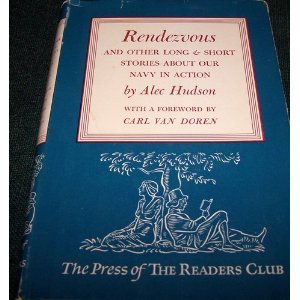
“There was a sort of gallows humor about it on the CinCPac staff,” said Mac. “You will see that one of Jasper’s stories in “Up Periscope” is called “Rendezvous.” It was originally in the Saturday Evening Post just before the war. It outlines a plan by which submarines would refuel long-distance seaplanes for a sneak attack. There was quite a laugh about it on the staff, at least those that were cleared. Eddie Layton suggested that Jasper had planned the attack for the Japs, but it was not completely in jest. There was an investigation, and Jasper was exonerated.”
“That must have been sort of strange between pals,” I said.
“They weren’t,” said Mac. “Joe Rochefort and Eddie were very close. But Eddie couldn’t stand Jasper. I was one of his kids in the Estimates Section, and he was delighted when he finally got enough of us Lieutenants to stand up a real 24 hour watch. And he made Commander.”
“I imagine that would pick up anyone’s spirits,” I said. “it certainly did for me.”
“After I volunteered to go forward to Guam in ‘45, Jasper came out to make a visit. I told Eddie I was going to go out to the airfield and pick him up in my jeep. Eddie wanted to know why I was going to bother.”
I shook my head in wonder at the memory of a rendezvous so long ago and far away, vivid as if it were just yesterday.
Copyright 2015 Vic Socotra
www.vicsocotra.com
Twitter: @jayare303
The Villains of the Piece
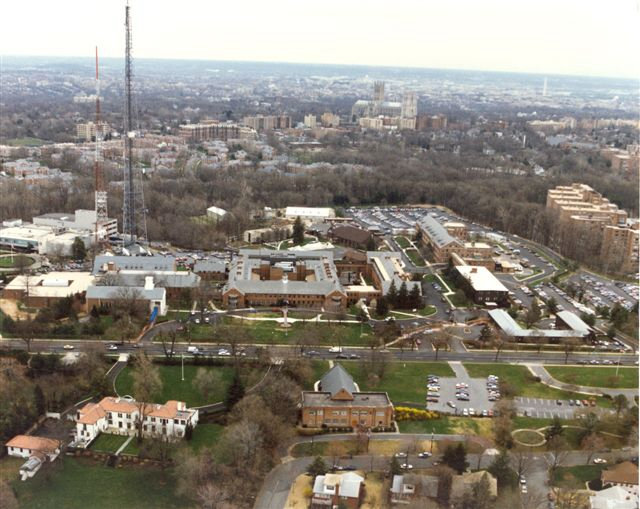
(The former Naval Security Group Campus in Northwest Washington. Mac Showers worked here and lived nearby. Photo Naval Security Group).
OK- I am going to beat it to death, but Van Dyke goaded me into it. Sorry in advance. This is about everything that came after the war, and the effort of Chester Nimitz to protect the intelligence system that helped him win a war, and Forrest Sherman, who thought intelligence officers were worth keeping.
I was walking on the campus of the Naval Security Group at Nebraska Avenue several years ago. It is a nice place- a girl’s school the Navy had confiscated at the beginning of World War Two. It was around the time that the newly-established Department of Homeland Security was attempting to organize itself. It was remote duty in Northwest Washington- the only place to eat on post was a Subway, and the agony of the sameness of the menu was oppressive.
The glory days of the Naval Security Group were passed there and functionally the NSG had moved to Fort Meade. Walked toward a 12” BMT submarine sandwich, I passed one of the red-brick buildings and noticed it was named for one of the Redman Brothers.
I was looking for a picture of it this morning, and discovered the Redmans did a modest bit of legacy building- there is a Redman Avenue at least two NavComStas, a suitable tribute to a couple of self-aggrandizing officers who put careers before country.
I think that is borderline treason, but what the hell.
That is the depth of the animosity of the Radio Wars, a seventy-year bureaucratic struggle which the Navy harbored as two hostile tribes: cryppies and intel beanbags. It is a loopy way to come full circle, after all these years. The Line thought they finally had it settled, having established a three-star billet with a Line officer as Director of Naval Intelligence and Communications, but then the Fat Leonard ship-husbanding scandal smeared every Navy leader who came up through the Pacific Fleet.
Before that, it seemed like it was the final triumph of Richmond Kelly Turner, the Line officer who knew everything better than his intel folks, and who was supported by the Radio mafia to cut out the DNI, RADM Theodor Wilkenson, who was junior to Turner.
The number of weasels in this story is not limited to the Redman brothers and their co-conspirator in OP-20-G at Main Navy, Joe Wenger. Prime among them is Admiral Richmond Kelly Turner himself, who must bear a major share of the blame for the surprise at Pearl Harbor.
By the way, this isn’t about my tribe or the crypto tribe- all these officers were Deck folks, for the most part. The tribal thing came after the war.
That said, t he struggle between intelligence and Plans is well documented. The Navy did not care overmuch for intelligence, nor did it appreciate the remarkable advantage that radio intelligence brought to the table, along with the even more amazing contribution of the officers who were sent to Japan for language and cultural orientation.
Richmond Kelly Turner was a battleship sailor, the core value of the pre-war sea service. Guys like Joe Rochefort and Eddie Layton, and medically-retired submariner Jasper Holmes were the mavericks who brought innovation to code-breaking, and intuition into what it meant.
Nebraska Avenue has a long and storied association with Naval Intelligence, but specifically to the tribe of Radio Intelligence. Mac worked there after the war, doing Russian stuff. I made the pilgrimage there often in the Cold War.
But to the villains of the piece: John Redman was the younger of the two brothers, but wound up going further. Neither of the two- John nor Joe- were what we came to call “cryptologists.” They were deck officers, just like Mac Showers, undifferentiated from the rest of the Line. The Hawaiian Sea Frontier people periodically came to Mac to remind him that Deck officers went to sea- which almost killed him on a cancelled indoctrination patrol on a submarine that was lost with all hands.
The officers in question did have a subspecialty in communications, that is true. Jack was class of 1918 at the Academy (graduating with the class of 1919 due to war) and an Olympic wrestler. The pivot to this story is about the role of Admiral Turner, as director of War Plans, and that of the Director of Naval Intelligence, which came down to a senior to junior relationship.
You know who is going to win that one.
Turner specifically withheld the diplomatic decrypts of Japanese communications that would have indicated, by any reasonable analyst, that Hawaii was a likely target for surprise attack.
In my mind, that is case closed. But my resentment is not stoked by long-ago staff wars in the OpNav bureaucracy conducted by men now dead in buildings that no longer exist. It was the legacy of the struggle of the Radio Wars, which lasted all of Mac’s long career, and mine thereafter, and the wreckage that remains today.
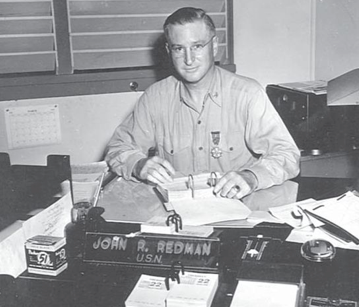
(Jack Redman with his Legion of Merit pinned to his wash khakis. Photo Naval Security Group).
I mentioned the other day that John “Jack” Redman wrangled orders to Pearl Harbor shortly after the victory at Midway to become the PacFlt Communications Officer. I recall one of the conversations with Mac about how weird that must have been, for Redman to be on the same staff, and if they had ever interacted. He paused, thought for a moment, and said he had not. Strange.
Meanwhile, Redman was using Chester Nimitz’s private circuit to send messages back to Joe Wenger at Main Navy to pile up accusations about Rochefort. When Nimitz was informed about Redman’s use of his private code, he was furious, and refused to speak to him for weeks. The actual messages that were exchanged had been destroyed, so the depths of the skullduggery were never plumbed. Wenger authored the hatchet job memo that Jack forwarded through the Navy leadership to undermine HYPO’s independence.
We all know that knowledge is power- and Jack tried to retain as much power as he could. His organization’s intentional withholding of intercepts and tips with British, Indian and New Zealand allies, who were also working on the decryption of other Japanese codebooks, was considered to have collectively held them all back. Information was only shared between organizations after the intervention of his brother, Admiral Joe Redman in September 1943 as the Pacific war shifted to an offensive struggle.
That is about as much positive as I can find about his brother.
On May 2, 1945, Jack assumed command of the battleship USS Massachusetts (BB-59) which he held through the end of the war. Wiki says he was Director of Naval Communications, the position his brother held, from August 1949 to September 1951. He stayed in the Communications world in his next assignment on the then-toothless Joint Staff, and finished as Commandant, Twelfth Naval District in San Francisco, from 1954 to 1957. He retired from the Navy on October 1, 1957, with the rank of Vice Admiral, and Congress let him retire in that rank (all Admirals are permanent two-stars, though customarily are permitted to retire in the last grade served, absent misconduct). He is buried in Arlington National Cemetery.
I will try to find him sometime. I am assuming that the buildings and roads are named for Jack, but perhaps the brothers colluded to share the glory they stole from Rochefort.
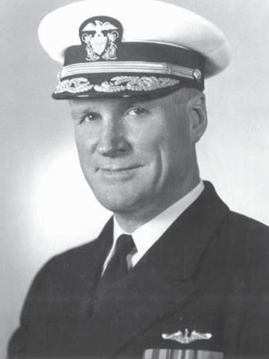
(Joseph Redman. Photo Naval Security Group).
Joe Redman was the older, and enabler of Jack. He was Naval Academy Class of 1914. He had the standard deck officer career path in the Gun Club, and commanded USS Tuscaloosa (CA-37) a new construction heavy cruiser from December 1939 to May 1940. On December 7, 1941, he was serving as the assistant to Rear Admiral Leigh Noyes, DNC, and thus involved in Admiral Turner’s stonewalling of Admiral Kimmel. Following the reorganization of naval communications in February 1942 and the departure of Noyes, Redman succeeded him as DNC until September 1942. Redman then went to the South Pacific to command USS Phoenix (CL-46) which had survived the attack at Pearl. He returned to Washington as DNC in an unusual second tour, from April 1943 to August 1945. He retired with the rank of Rear Admiral, and is also buried in Arlington National Cemetery.
I may re-think my plans to join them there. Eternity is too long, you know?
Every year the Admiral Joseph R. Redman Award is given to the midshipman of the graduating class at the United States Naval Academy who has “demonstrated the greatest achievement in the professional courses in Electrical Fundamentals and Applications” and is nominated by the Electrical Engineering Department.
So, that is the legacy of the ringleaders. Richmond Kelly Turner was, for whatever else he was, a fighter, and is buried with his WWII comrades Nimitz, Spruance and Lockwood (with spouses) as per their agreement in life. To the best of my knowledge, none of the Comms weasels paid a dime for what they did, and lived to the end of their lives with the honor that really belonged to other people. Joe Rochefort handled it pretty well, by all accounts, though he burned his personal papers, much to the frustration of history (and El liot Carlson in particular).
Joe Wenger, possibly the most mendacious of the lot, was awarded the National Security Medal from President Eisenhower for his ” planning and organizational work in communications research. ” No shit. He centralized the crap out of it. He and Mac are in the NSA Hall of Fame, along with Joe Rochefort.
The Redmans are not. Either of them.
Oh, and the footnote I like the best? Use Phoenix survived the Japanese but did not survive the Royal Navy. Her most ignominious moment came at the hands of the Royal Navy. Sold to the Argentinians after the war, she was renamed Marshall Belgrano and sunk by HMS Conquerer for violating the British declared exclusion zone around the Falklands, accounting for half the Argentinian casualties in the war.
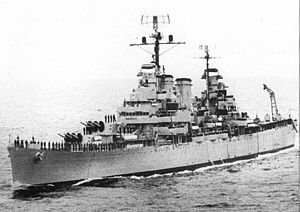
Copyright 2015 Vic Socotra
www.vicsocotra.com
twitter: @jayare303
Growing Like Topsy
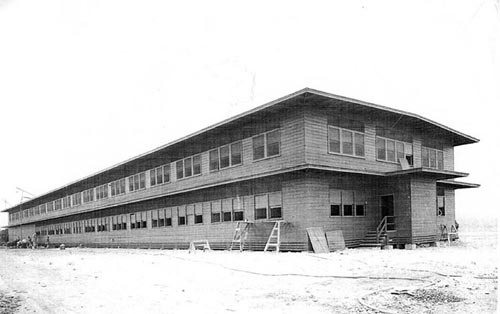
(On the rim of Makalapa Crater at Pearl Harbor, this semi-permanent wooden structure was built in 1943 to house the Joint Intelligence Center Pacific Ocean Areas (JIC-POA), where intelligence was collected, evaluated, and disseminated throughout World War II.)
“The joint intelligence center is responsible for providing and producing the intelligence required to support the joint force commander and staff, components, task forces and elements, and the national intelligence community.
– Wikipedia
I don’t trust Wikipedia further than I can throw it, which with the lap-top, is almost all the way from my brown chair to the flat-screen television, which I did not turn on to watch the Oscars last night. I confess the account of the removal of Joe Rochefort from command of station HYPO got me riled up, and it took a while to settle down again.
Reading the account of the DC perfidy that occurred in the last few weeks in September and October of 1942 was profoundly depressing, since it was exactly the story of how things work in a bloated and bureaucratic system that exists, over time, mostly to feed itself.
Before he was ordered back to Washington for his Star Chamber, Joe was the interim Office in Charge of the new Intelligence Center-Pacific Ocean Area (IC-POA). According to Elliott Carlson, Joe hated the additional duty, and viewed it ass a distraction from the critical work being done by Station HYPO’s cryptanalysts and linguists. I think Joe had a point, at that point in the conflict, but things were going to grow like Topsy, and that is just the nature of things.
I base that on analogous experience. I reported to the Pentagon in the early stages of DESERT Shield, in the Fall of 1990. I had accepted ores to the Joint Staff JS organization before deploying to the Med the year before, in USS Forrestal (CV-59). I think I was supposed to be assistant chief, Middle East, North Africa Branch, working for the legendary Andrea Arnstett, but I had a scheme, as every good careerist must, that I would synchronize with the likely assignment of whoever the new intelligence flag officer was going to be.
In those days, it was usually a show-down for selection to Flag rank between the Fleet Intelligence Officers (N-2s) of the Atlantic and Pacific Fleets. I had worked for the PacFlt N2 before, and made a mental wager that he would be the community pick, and further, the most likely assignment would be as the Flag officer assigned to support the Joint Staff.
Ask anyone- the concept of the “Flag Chase” never works out. If you wait to negotiate for orders to work for someone you know, once you know where they are going, by the time you can extricate yourself from the assignment you are on, and actually get there, the person you wanted to work for is probably packing bags to move on.
In this case, my scheming actually worked out, though it could have been a disaster that would have buried me in the bowels of DIA.
Here is how it worked out. The new JS was indeed the PacFlt N2, and I got to the Pentagon just a month after he reported for duty to General Colin Powell. It is a good thing to be able to skip all that relationship-building nonsense, and being at war- or preparing to go to war- provides a marvelous focus on real things.
In this case, it was clear that a central clearing-house for collections and analysis was going to be needed, and a dank space on the Pentagon Mezzanine level was identified to house the National Military Joint Intelligence Center (NMJOC). It had a variety of growing pains. Privately, some called it the “Teenage Mutant NMIJIC” after the popular cartoon of the day, but grow it did. Groups of Army, Navy and Air Force people began to appear with alarming regularity, equipped with computers and telephones.
The mission was constantly changing- defense of Saudi Arabia was the beginning, and sanctions enforcement against Saddam’s government was a big deal, since that is what we were doing at the time.
That rapidly changed. Sanctions, first, then mine warfare, and Air Order of Battle, and SCUD-hunting and ground combat all followed with dazzling speed. Once the fight was on, and STORM followed SHIELD, we concentrated on Bomb Damage Assessment and mobility studies, and target nominations. The crisis de jour depended on what the forces in the field required, and of course feeding the decision-making beast in the Building.
It was the same deal it was when Joe Rochefort was sent packing in the Pacific in late 1942. Jasper Holmes reported that changing from defense to offense required new kinds of intelligence support to the operating forces.
IC-POA was cursed to attempt to meet the burgeoning requirements of the amphibious forces who were tasked to storm the beaches. That meant that the vital code-breaking had to be supplemented by skilled imagery analysts, area studies experts, map-makers, and craftsmen who could turn the maps into physical models of the objective atolls.
The only constant in the changing mission swirl was the constant change.
The initial request by the Marines was to create the IC-POA with more than 200 personnel. Only about 40 were actually available when the organization stood-up, which was a blessing, since Jasper Holmes and Mac commented that The Dungeon rhythm was upset with the arrival of all the new faces, and the sensitivity of the code-breaking made security a real concern.
The solution was to move all the IC-POA desks to the far end of The Dungeon, creating an artificial separation between HYPO and IC. With the concentration on tracking IJN naval units through the beginning of 1943, many of the original cadre of intel center officers had moved on to other priorities of the moment. By February 1943, the pipeline for linguists had begin to produce graduate. Twenty of them arrived in February, and CAPT Goggins was put in charge of both.
The organization had shops for an Objective Data Section; a Language Section; and the Combat Intelligence Unit, which was nominally a part of ICPOA but functioned as a part of HYPO. The Photographic Reconnaissance and Interpretation Section (PRISIC) was over on Ford Island, but moved to the second deck of the Kodak Hawaii Building downtown for the obvious reason- access to film.
The organizational contortions continued to lurch forward as Joe’s relief, a CAPT Bill Goggins settled into Joe’s desk. Mac recalled that the transition was aided by Joe Rochefort’s let to Jasper, urging the team to support the new guy.
HYPO itself was having growing pains. Its ranks began to swell after the Battle of Midway. The machine room was “bursting at the seams” according to Jasper, and since it required air-conditioning to make the machines happy, a new facility outside the dank Dungeon was needed.
Jasper described how the seams in The Dungeon were being stretched: “Our plotting facilities, with their expanded collections of charts and maps, required more space. The manifold file of hectographed Japanese messages, a basic source of information for the Japanese naval order of battle, grew to occupy more space than had originally been allotted to the entire unit. Even the card file of place-names had grown to more than twenty thousand cards.”
Accordingly, a building designed specially to handle the IBM machines was constructed on the rim of Makalapa Crater, immediately adjacent to the CINCPAC HQ. HYPO and IC-POA moved out of the bustling Ship Yard their new digs in April of 1943. Mac once told me at Willow the requirements for IBM punch cards were so large that the warehouse next to the new building was filled with nothing but card stock.
The building is still there, something I find remarkable. The new facility was- and is, when I stood there a couple weeks ago- isolated on a dead-end road. Then, it was surrounded by a high chain-link fence and equipped with armed Marines at the gate.
On 7 September, 1943, the tempo of offensive operations jumped into high gear. To serve the planning staffs that rotated through O’ahu, the intelligence section of Admiral Nimitz’s staff was reorganized to cope with the accelerating OPTEMPO. HYPO was administratively separated from IC-POA and transferred to the Pacific Fleet as the Fleet Radio Unit, Pacific (FRUPac).
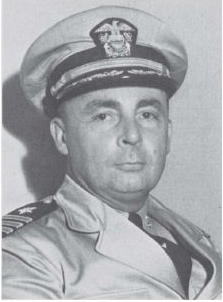
(Captain William Goggins, the non-cryptologist selected by Washington to lead HYPO. Mac said he was a pretty good guy and didn’t have anything to do with the coup d’etat. His style was more old-school Navy than Joe Rochefort’s was. Photo USN).
Captain Goggins remained with the unit as officer-in-charge of FRUPac. IC-POA was placed directly under the assistant chief of staff for intelligence (ACOS/J-2), Joint Staff, Commander in Chief, Pacific Fleet, and Commander in Chief, Pacific Ocean Area (CinCPac-CinCPOA). To accommodate the new Joint nature of the reporting chain, it was rechristened as the Joint Intelligence Center, Pacific Ocean Area (JIC-POA).
Brigadier General Joseph J. Twitty, was appointed J-2 and officer-in-charge of JICPOA. Captain Eddie Layton remained as Fleet Intelligence Officer. The Combat Intelligence Unit of ICPOA became the Estimate Section of JICPOA, which Jasper led, supported by Mac Showers.
The war in the Pacific was hurtling forward, and the institutions had to change and grow, just like Topsy.
It is the way it works.
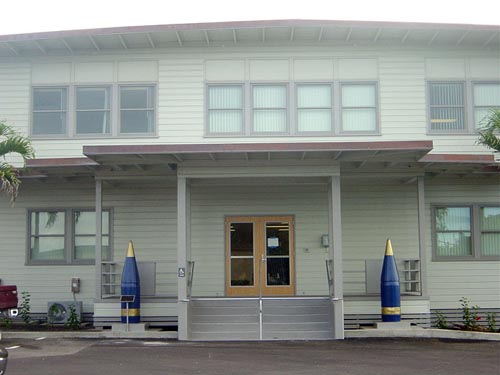
(The former JIC-POA Building was sinking into Makalapa Crater in the early 2000s when the Navy actually did something to preserve its history. JIC-POA and Station HYPO were here longer than they were in the famed dungeon. The blue shells on either side of the door are from the IJN Yamato. At 18.1 inches, they were the largest ship-borne artillery ever forged).
Copyright 2015 Vic Socotra
www.vicsocotra.com
Twitter: @jayare303
Coup
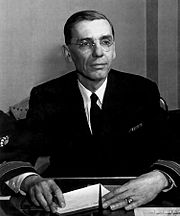
(Joseph Wenger, shown here as a Rear Admiral, who was one of the conspirators to get rid of Joe Rochefort and centralize control of Radio Intelligence in Washington. He would probably deny it, if he were around).
Captain Garth: “Joe! You’re guessing!”
Commander Rochefort: “We like to call it ‘analysis.’”
– Dialogue from the 1976 Universal film MIDWAY
When I worked on Ford Island, the filming of some of the action shots in Pearl Harbor for the film “Midway” wwas the only eason some paint had been slapped on the historic buildings, the only real maintenance that was done for years. The bunkroom we used on duty days had been the set of Patricia Neal’s office, and I often thought of her seated in front of the window that overlooked the courtyard.
A lot happened between the devastating attack that cost 2,403 American lives and wounded more than a thousand more and the inconclusive Battle of the Coral Sea. Even more remarkable was the ambush orchestrated by Chester Nimitz on the Japanese fleet off Midway in June of 1942.
Under the leadership of Joe Rochefort, Station HYPO grew increasingly confident of their ability to recover the gust, and sometimes more than the gist of Japanese naval communications. The Intelligence Center- Pacific Ocean Area is stood up, bringing imagery analysis and topographic and regional analysis to the signal advantage of the radio intelligence produced by the Fleet Radio Unit.
I am not talking about Operation WATCHTOWER- the American invasion of Guadalcanal, nor the big gun battle off Savo Island where the Japanese sank four cruisers, three Yanks and one Aussie. This was the real stuff, and for a taste of the horror of what it was like to be on a steel ship exchanging gunfire with others at point-blank range, I commend the account contained in “Neptune’s Inferno,” by James D. Hornfischer. But with the COMINT support produced by HYPO, it could be said that by September of 1942, the threat to Australia had been eased with the first outright defeat of Japanese ground forces at Milne Bay in Papua, New Guinea. It was, to quote the old warrior Winston, not the beginning of the end, but certain could be called the end of the beginning.
But that is the stuff from the history books. What I am talking about is the bitter bureaucratic infighting that abruptly removed Joe Rochefort from command at HYPO, and the astonishingly mendacious conduct of the people in Washington who typify the REMF (“Rear Echelon Mo Fo’s”) who had some important career issues to settle.
Admiral Nimitz thought enough to recommend Joe for the Navy Distinguished Service Medal, the non-combat equivalent of the Navy Cross. Late in June, only a month after the greatest triumph of American nautical arms and for opaque reasons, COMINCH Admiral Ernie King, denied it.
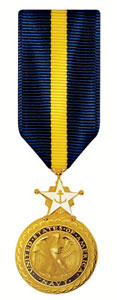
In October, with the Marines engaged in the desperate fight to secure Henderson Field on the Canal, King approved a plan shaped by leadership of the Radio Intelligence mafia in Washington to relieve Joe Rochefort of command. The men responsible were RADM Joseph Redman, Director of Naval Communications, his brother, Captain John Redman, and a careerist barracuda named Joseph N. Wenger, all of whom either were already or would make two stars.
Joe Rochefort was many things, as author Elliot Carlson observes: “a tall, slender, taciturn officer who spoke quietly but knowingly, radiating authority and his own distinct brand of bemused seriousness. “ Joe also had a capacity for irreverence, sarcasm, and blunt speech that astonished even his closest friends.” He was human. But he was also the finest combination of cryptologist, linguist and analyst in the Pacific. His blunt talk may have set the course, but he was punished by Washington for accurately predicting the location of the Japanese Kido Butai, the IJN Carrier Striking Force- off Midway.
The Redmans had predicted the target was Dutch Harbor in Alaska. They were wrong, and Joe was right. Clearly, Joe had to go.
Two-front wars never work out that well in my experience, and Joe had at least two of them going on. He rightly regarded the dismissal of his DSM as evidence that the REMFs were out to get him. A quiet investigation was initiated from Washington, the secret results including the observation that Joe and Eddie Layton were at loggerheads, and there were troubles in paradise and it was Joe’s fault. The establishment of the IC-POA had caused him to be made the Officer in Charge, a duty he did not want.
Nothing could have been farther from the truth, but both men had agreed to parrot the story, in case the simmering war between the Director of Naval Communications and his OP-20-G radio intelligence folks, the Director of Naval Intelligence, and Station HYPO was being attributed to a “too close” relationship between Layton and Rochefort.
There was a war on that had nothing to do with the Nazis or the Japanese.
Reading the words of Jasper Holmes about how it went down, and hearing Mac describe what happened in person is still amazing. There was the memorandum Mac gave me a copy of, drafted probably by Wenger, in which CAPT Redman grandly puffed the successes of Washington recommended applying it to HYPO. There was the campaign to associate Joe and Eddie Layton with a leak to the Chicago Tribune about the Japanese order-of-battle at Midway that could only have come from COMINT. (It did, but the leak was in the Fleet).
Then John Redman appears in Pearl as the new Comms officer on the staff, and beings a dialogue with his Washington conspirators via Admiral Nimitz’s Flag privacy circuit, something specifically not authorized by the Admiral.
A relief for Rochefort was ordered in without the approval of the 14th Naval District Commandant or Admiral Nimitz.
The Redmans wanted Joe in the worst way, and that is just what they did to him.
Joe Rochefort got Temporary Alternative Duty orders in mid-October to report back to Washington for meetings and discussions. Joe knew something was going on. Although the orders specified he would return to Hawaii, he told Jasper we knew he would not be back. He gave Jasper the keys to his desk and some military papers, and Jasper did not see him again until long after the war. When he walked through the big steel door and up the steps from The Dungeon, it was 25th of October, and that was it for Joe and HYPO.
The bastards got him. Not that Joe helped himself in the Star Chamber sessions with the Radio Mafia when he arrived in DC. He did take time to write to Jasper a week or so later, and explained what had happened, and predictably, urged his former shipmates to give their full support to his relief.
“The only probable explanation of what happened to Rochefort,” Holmes reports in Double Edged Secrets, that he “became the victim of a Navy Department internal coup It was,” said Holmes, “another blow to our morale.”
As I said, the key conspirators in Washington all made Flag. After the war, Joe Wenger became the first Deputy Director of the Armed Forces Communications Agency, precursor to NSA, and then the Deputy at the newly established NSA. They are very good at what they do.
Joe? He wound up going back to sea, as skipper of a floating dry dock. He did not get his DSM while he lived, but as the wartime figures passed away, Mac Showers remembered. Joe died in 1976, but Mac kept the pressure on, and in 198 6, President Ronald Reagan presented the Distinguished Service Medal to Joe’s kids.
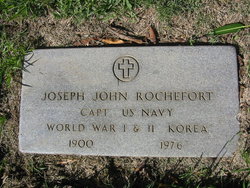
Copyright 2015 Vic Socotra
www.vicsocotra.com
Twitter: @jayare303
Intelligence Goes on the Offensive
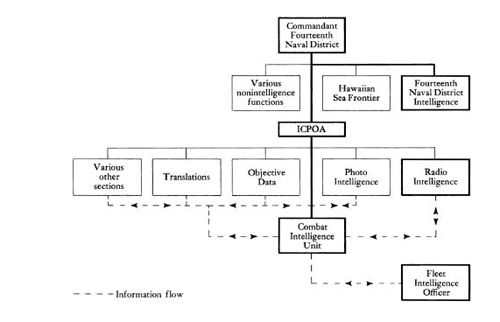
(Chart of the organization of the 14th Naval District from Jasper Holmes’ book Double Edged Secrets. Naval Institute Press).
OK- this might get a little dry, but I am left with no choice. The Dungeon was where the magic of the cryptologists, linguists and analysts happened. You have seen the diagram that Mac drew on cocktail napkins, and thank God he did. Those of us- and several have appeared, they know who they are- to comment on the various subterfuges and strategies they used to actually get inside the basement space.
It does not look much like it did, the Navy not having much use for history, though I have heard there are still a couple charts on one of the walls. We are going to try to do something about that, and soon, before anything else is lost forever in the former 14th Naval District HQ.
But I digress. I think it is time to step back a little and describe how the organization that started with what Tex Biard called “ten officers” of whom he thought five were brilliant.
What they achieved was historic, but this was a conflict of truly historic dimensions across an ocean area of vast expanse, and prevailing in fleet-on-fleet encounters at sea were vital. But then as now, boots on the ground is the true measure of whether success is enduring, or can be stolen by bold counter-attack.
There were two wars to deal with, as you know. I think I told you- early on in my tipsy Boswell to Mac Showers Johnson, I came to his attention for bad mouthing General Douglas MacArthur, who I have always considered to be an ambiguous historical figure. All through the war, the General attempted to take credit for things that either he was not responsible, or that he imagined. Air Corps success against surface ships was one periodic burr that got under Jasper Holmes’ saddle (among others), but Admiral Chester Nimitz sternly admonished his staff not to comment on the public relations exercise being conducted by the Supreme Commander of Allied Forces in the Southwest Pacific Area, starting immediately upon MacArthur’s assumption of command in April of 1942.
By insulting “Dougout Doug,” I had violated a direct from Chester Nimitz, and it took several glasses of wine to get past that with Mac, as I explained that I was not assigned to a staff that had not existed in nearly seventy years.
My point was that MacArthur’s inability to work cooperatively with Nimitz created a situation in which there were two wars: The US Navy one, and the Army version that would hop across the islands to reclaim the lost colony of the Philippine Islands.
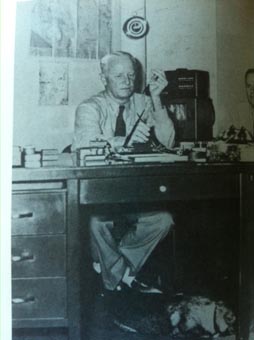
(FADM Chester Nimitz at his desk, still in use at the Pacific Fleet HQ. Photo USN. Note his dog, Makamapa at his feet.)
I am not going to try to re-fight all that, and Admiral Nimitz took a similar phlegmatic approach to things. So did Joe Rochefort. It didn’t matter who got the credit, so long as there was victory.
It did not work that way back in Washington. But before we get to the part where Joe Rochefort, arguably the finest cryptologist, linguist and analyst in the Pacific got shit-canned, we have to talk about the structure that was building to support an offensive that was going to seize ground from a determined enemy.
OK- I was going to tell you about how Hawaii shifted over to the offensive. To do that, the Fleet Radio Unit was going to have to be joined by other disciplines, including aerial photography and reconnaissance and objective research, like the seashell knowledge Chief Kenneth Kearns found in the person of Ditlev Thaanum.
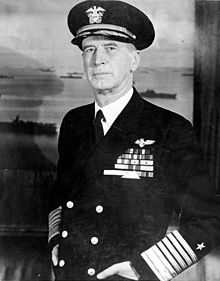
(FADM Ernie King. A hard drinker in peacetime, he vowed to go on the wagon ‘for the duration.’ He did. Photo USN).
There was a lot of stuff to know if you are going to drive across the wide Pacific and drive a bayonet into the heart of a samurai warrior. According to Jasper, the Marines had a few questions. In March of 1942, before the battle of Midway, the Commandant wrote to Admiral Ernie King, Chief of Naval Operations and Commander in Chief, United States Fleet. If the Marines were going to be expected to root Japanese out of the thousands of islands between Honolulu, they really needed an intelligence support activity that could answer the basic requirements of the Fleet Marine Force.
The request called for 81 officers and 121 enlisted personnel from the whole range of the Deprtment of War and the Navy in the theater: Army, Navy, and Marine Corps, with a U.S. Navy commander or captain as officer-in-charge. The first commander was going to be Joe Rocherfort, and his charter was “to collect, collate, and disseminate intelligence to all forces operating in the central Pacific area.”
In July, the Commandant, 14th Fourteenth Naval District was directed to establish the Intelligence Center, Pacific Ocean Area. ‘IC-POA’ sounds, well, a bit icky. But that is how things work. So, we have an intelligence command that is going to support an aggressive war against an implacable and vicious foe.
More on how that happened, and what Jasper and Mac did inJIC-POA, will have to come tomorrow. In the meantime, I was up early, and with the books and papers strewn across the dining room table, snow driving across the windows in the pre-dawn, and I thought I saw the ghostly figure of a tall man in Service Dress whites. I blinked and of course there was nothing there. But I was mildly interested in the fact that Jasper Holmes book was open to the chapter on Tarawa, where the Higgins boats had come to grief on the reefs five hundred yards from the beaches.
I looked at the paragraph that seemed to leap out: “The Fifth Amphibious Force had obtained good information on the tides but, in the compromise to get the best combination of moon, surf, and tide, it had encountered an unpredictable “low dodging tide.” This factor was responsible for many Marine casualties, and left an unfortunate impression that intelligence had done a poor job on beach information.”
I took a sip of coffee. The truth always depends on who is left to tell the tale, you know?
Copyright 2015 Vic Socotra
www.vicsocotra.com
Twitter: @jayare303
Seashells and ICEBERGs
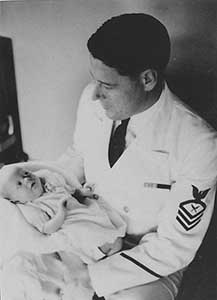
(This is Brian’s Dad Kenneth Kearns, from the only wartime picture he has. Note the one hash stripe, reflecting his pre-wartime USN service (1929-1933) as a radioman (RM, i.e., manual Morse operator) most of it in the USS California (BB-44), later sunk in the Pearl Harbor attack and resurrected. Also note the yeoman rating, as there weren’t any Intelligence Specialists (IS’s) in those days).
Brian thinks this photo was taken in June 1943, just after the birth of his older sister Valerie. She was a “Midway” baby, as after the battle of Midway people in the lovely islands figured the Japanese weren’t coming and they could start having children again. The War in the Pacific wasn’t about just military stuff, not by a long shot. It was about a collision of peoples, just as it is today.
My pal Brian’s Dad is the key link to a critical source of information that helped win a battle that helped win a war. Information is the key to the creation of actionable intelligence. Analysis is the process by which that information is sorted into actionable intelligence.
That was a critical matter, since each of the amphibious landings in the Pacific provided a horrific teaching point as the art of storming heavily defended islands from the sea was perfected. Well, improved. There is no perfection in military operations. No plan, as they say, survives first contact with the enem y, and the enemy always gets a vote .
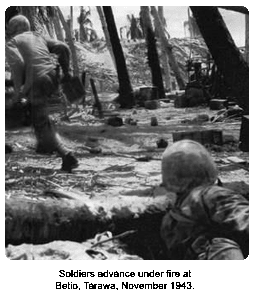
At Tarawa, for example, the Higgins landing craft made their way toward the landing beaches and then came to an abrupt halt on the protective reef. They had made the mistake of timing the landing to occur at low tide. The reef was 500 yards from the shore, and as soon as they hit it, the Japanese hit them with massive fire power, destroying many of the craft before the men could even disembark.
The Marines quickly realized that the enemy had not been neutralized. As the first wave waded through the water to the beach, only a few managed to get to the shore.
At Peleliu, the planners were told by military intelligence that the island was flat and featureless. Uncle Harold was there with the 1st Marines, carrying a flamethrower for that up-close and personal war with heavily defended bunkers. As it turned out, Peleliu featured dense growth that was nearly impenetrable. 1,500 men of The Old Breed perished with more than 6,000 wounded. At least they landed at high tide.
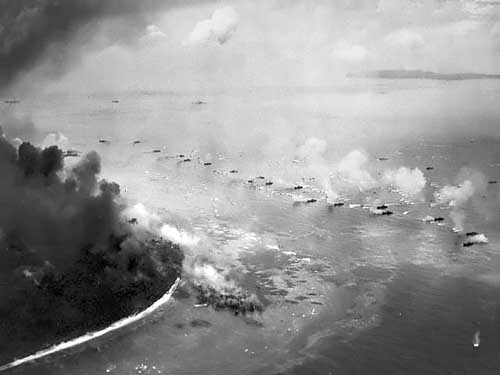
So, Jasper Holmes and JIC-POA had a real problem from the last teaching moment, which was that the planners did not know the black volcanic sand was going to limit the use of tanks on Iwo Jima. Brave men died because of it. A lot of men.
Jasper had an information problem and he knew it. He sent out a call to the 14th Naval District Intelligence Office to try to find someone who knew something about the nature of the beaches the dogfaces and Leathernecks were going to have to cross.
In the book, Jasper credits LCDR Keith Vanzant with finding the key, but he had it at least partly wrong.
Chief Kearns talked to Vanzant at the time and a lightbulb went on. He knew an 80-year old conchologist named Ditlev D. Thaanum, who collected seashells on beaches across the Pacific. As Jasper noted in his book “Double Edged Secrets,” Thaanum’s notes, maps and photographs were extremely valuable in the preparation of preliminary intelligence assessments on the landing beaches.
They saved lives. Continued investigation of Thaanum’s trove of material revealed the identity of his co-workers on the sea-shell collecting expeditions. A man named Daniel Boone Langford, 63, was located in Arizona. A spritely 63-year old, he proved to have an encyclopedic knowledge of the reefs and beaches of Okinawa. In fact, his command of the terrain was such that the commander of the 5th Amphibious Force hired him to ride the flagship Eldorado (AGC-11) for the invasion.
The commander? You guessed it. ADM Richmond Kelly “Terrible” Turner.
I have omitted the expletive I sometimes include in his name. Regardless of what you think about Turner’s machinations as the Director of Navy Plans before the war, or his role in scapegoating poor Admiral Kimmel about the attack on Pearl Harbor, his service as the Commander of the Amphib Force was commendable. People are complex things, aren’t they?
Anyway, the story of how this all came to be part of victory is interesting on several levels. The first is how wide a net one has to cast to try to gain understanding of tough problems. The second is about the ingenuity of that fabled class of sailor, the Navy Chief. And the third was about how the tides of conflict shifted because of what Jasper, and Mac and Eddie and Station Hypo accomplished.
It was enough to make the people of Hawaii confident enough that there was going to be a future that they would start having children again.
Kenneth Kearn’s contribution to Victory in the Pacific did not become common knowledge until after the publication of Jasper Holme’s book. Kenneth read it, and knew the real story.
I will let Chief Kearns tell you the story just as he told it to Jasper Holmes. Honestly, I feel like both of them are sitting here at the dining table with me.
This is how intelligence works. Sometimes. There always is going to be a teaching point in these things somewhere.
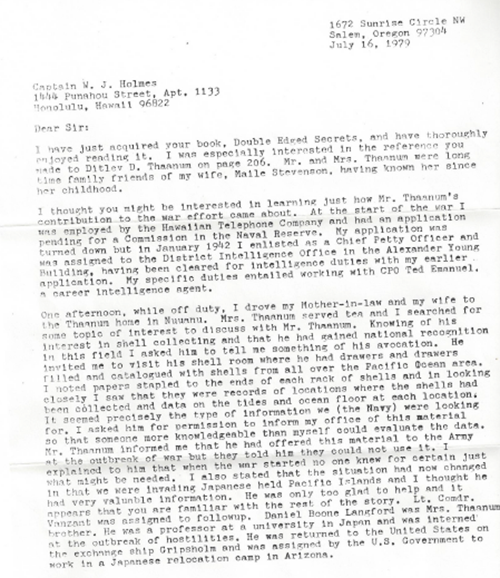
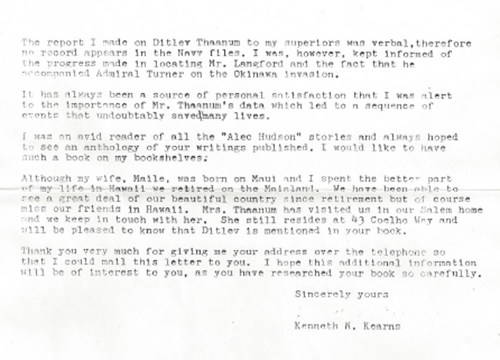
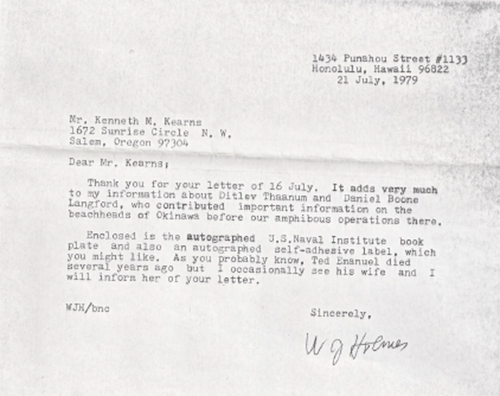
Copyright 2015 Vic Socotra
www.vicsocotra.com
Twitter: @jayare303
The Sands of Iwo Jima
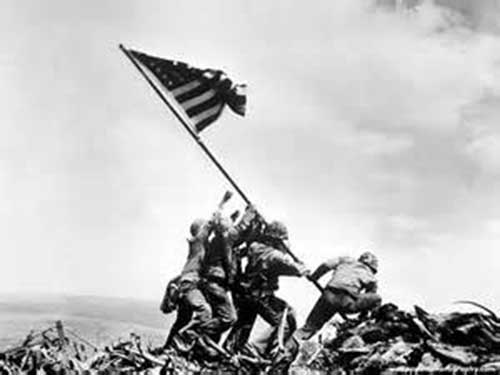
(Joe Rosenthal’s iconic picture of the flag raising on Mount Suribachi. Mac Showers approved it for release stateside. Photo Rosenthal/AP).
OK- there is no getting around it. I was sort of stalling for the 70th anniversary of the battle on Iwo Jima, which is this morning. I am not going to attempt to recount the savagery of the fighting, nor the innovative tactics used by the Japanese defenders that were a prelude to what would happen at Okinawa, and what was expected for the landings on Kyushu and Honshu.
This is the story of how the intelligence process worked then to support operational requirements. We are going to do beach gradients and landing surveys this morning. It is eerie to see the words of people who have gone on to the next phase of this grand adventure. Sitting with Mac at the Willow bar, I came to feel that I knew some of them.
Reading the words of Jasper Holmes, I felt that he was talking to me VFR direct. The year is 1945. Mac has deployed with the staff of Fleet Admiral Chester Nimitz. He is on Guam. Jasper remained at Makalapa, at the Joint Intelligence Center- Pacific Ocean Area.
The matter at hand is the trafficability of the beaches on Okinawa, the next target of the island-hopping campaign. Operation ICEBERG, if completed successfully, would place the Allies on the doorstep to the Home Islands, and set the scene for the final conquest of the Empire of the Sun.
No one except a handful of Commanders had any inkling about the existence of the gadgets- Little Boy and Fat Man- that would render Operation DOWNFALL unnecessary . ICEBERG was a challenge, and what loomed beyond it was frankly unimaginable. One thing at a time.
Mac used to talk of the regular comings-and-goings of the staffs responsible for planning these operations through the crater. In this case, it was the planners of four Divisions of the 10th Army: the 7th, 27th, 77th and 96th and the 1st an 6th Marines. They were planning for a “typhoon of steel” in what was anticipated to be the most savage fight of the war to date.
That is in the context of what happened at Iwo Jima. Despite the iconic photo taken by Joe Rosenthal of the (second) flag-raising on Mount Suribachi, things had hardly gone as planned in the sharp fight for the small island. The Marines would ultimately take 22,000 casualties in the more than month-long fighting. And if you didn’t recall, Mac was the classification reviewing officer- the censor- for all the images coming off the little volcanic isle.
He approved Joe Rosenthal’s picture for release. He thought it was a pretty good picture at the time.
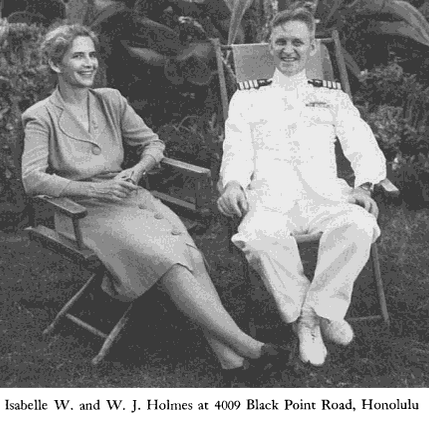
Anyway, Jasper did not deploy due to his arthritis and stayed behind at the JIC. He was fighting to get women assigned to replace the male yeomen who had deployed with the forward staff- he was an early proponent of equality and believed women should have been integrated into the staff far earlier in the war based on their reliability, industry and attention to detail. Perhaps he was influenced by the legendary Agnes Meyer Driscoll, who joined the civilian side of the Navy as a cryptologist in 1918, and was responsible for some of the early progress against the Japanese Naval Codes. “Miss Aggie,” as she was known, mentored all the members of the Dungeon staff at one time or another.
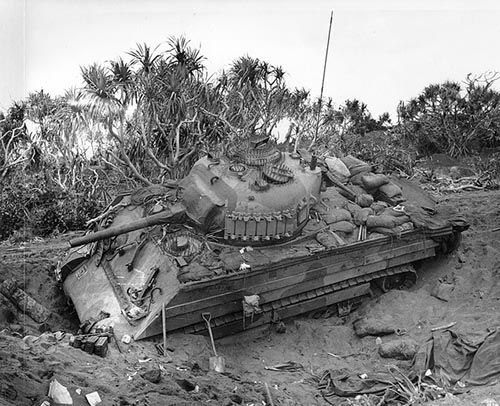
Iwo was secured by the end of March 1945 at horrendous cost. The strategic importance of the rock was debatable, and the price in lives and treasure was steep. One of the problems was the composition of the volcanic sand on the invasion beaches that snarled the treads of the tanks necessary to secure the initial objectives. The Japanese were so firmly and deeply concealed in their interlocking bunkers and tunnels that only the tanks provided with flame-throwers could advance close enough to douse the defenders in flames.
And the landing force did not know that the sands of Iwo were not compatible with the way the machines worked.
Accordingly, Jasper was casting about for the best information- hell, any information- about what the sand and soil on the invasion beaches were like, and whether the tracked and wheeled vehicles would be able to operate as designed. It was a matter of life and death for the solider and Marines.
Accordingly, Jasper send an urgent request to the 14th Naval District’s Intelligence Office to find someone- anyone- who knew something about the composition of the beaches on Okinawa.
In his book, Jasper credits LCDR Neil Vanzant with coming up with the answer. All recollection can get hazy- though I have only one real mystery left from all my discussions with Mac- but Jasper had this one wrong.
I will let the Chief Petty Officer who actually provided the contact information to the source that provided the precise information about what the landing force would confront when they hit the beaches.
I will have to get to the unique contributions of Kenneth Keanrs tomorrow. Sometimes knowing the right person is all that it takes, and he may have saved a bunch of lives by doing it.
It pays to keep your eyes and ears open. Loose lips sink ships, you know?
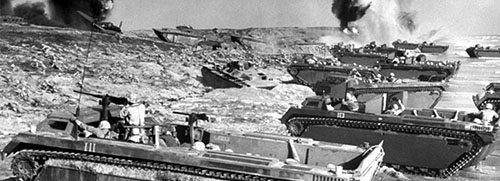
Copyright 2015 Vic Socotra
www.vicsocotra.com
Twitter: @jayare303
Double Edged Secrets
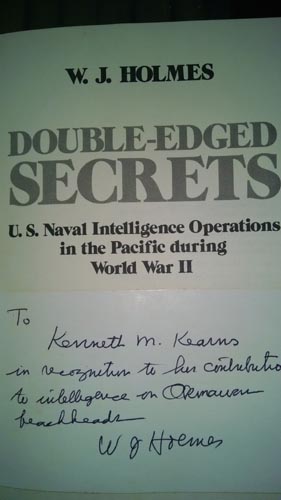
Sorry- I was going to do beach gradients and beach surveys of the Western Pacific today, since there is a cool story about them, and the Counterintelligence Section of the 14th Naval District, since I have the proof in a precious copy of Jasper Holmes marvelous book “Double Edged Secrets,” Naval Institute Press, 1979.
I am mesmerized by the artifact, since it has a letter from Jasper in the fly leaf, and a dedication in Jaspers hand. Part of the dedication is to Mac Showers, who used his contacts in the Navy and CIA to get the book cleared for publication through the labyrinth of the security process. This being one of the first inside accounts of how the codes were broken, there was considerable resistance in Washington to telling the whole truth, and nothing but the truth.
The copy is on loan from my pal Brian, given to him by his Dad, Ken, who included a copy of the correspondence he had with Jasper after the publication of the book.
The hook of the story involves an eighty-year-old conchologist- yes, I know, I didn’t know there was such a discipline- named Ditlev D. Thaanum. This was a pivotal issue and a vital element in the planning of the invasion of Okinawa, the first of the close-in Japanese islands, and a sort of preparation for the coming Big Deal, Operation DOWNFALL, the two-stage amphibious invasion of the Japanese Home Islands.
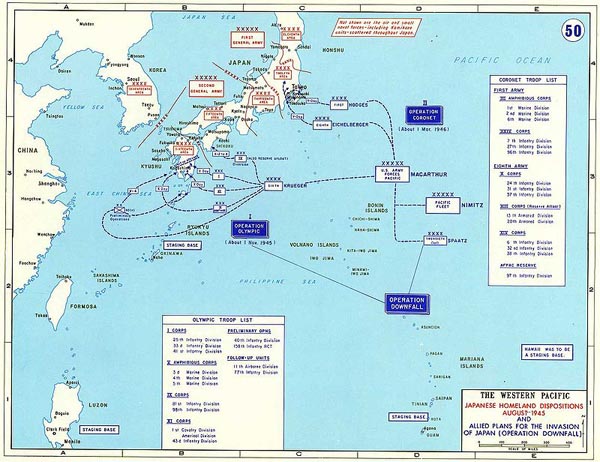
I am not going to spoil it right now- I was going to do my research last night and took the copy of Jasper’s book to the brown chair, since Willow was closed for an unprecedented second day due to the snow, and then I started reading the opening account of Jasper at home on a lazy Sunday morning and got hooked with that account of what happened that surreal morning when a world ended.
Jasper lived over at 4009 Blacks Point with his wife and son then. I imagine it was a traditional bungalow, but I can’t tell. Jasper’s house was ripped down in 1991 to make way for a multimillion dollar gated hideaway that is there now. Back then, the war clouds had been gathering all summer, and each precious weekend had a little wistful touch to them, since when the balloon went up, things for going to be very busy indeed until it was all over, one way or the other.
Jasper’s drive to work that morning featured a rapid passage through a languid downtown Honolulu and hundreds of autos converging to the Kam Highway to get to the base at Pearl.
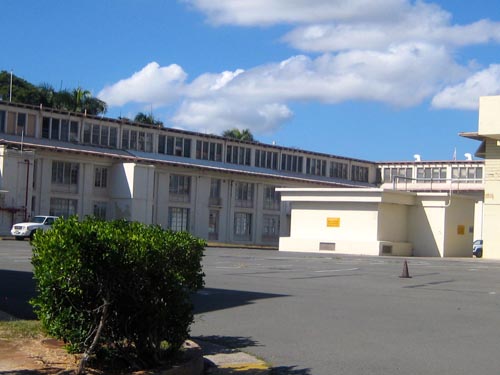
(The empty parking lot behind the former 14th Naval District HQ on the Pearl Harbor Naval Shipyard. Jasper said it was deserted the day of the attack, just like this).
He reported to his duty station- the Dungeon. He arrived in the strange lull between the attack waves. He was told by the duty officer that Arizona had gone up like a roman candle, Oklahoma had capsized at her moorings, and the situation was bad. Very Bad.
They got on with doing what they were doing- trying to penetrate the naval code of the people who were busy strafing the base and firing torpedoes into the massed fleet. At some point the second wave of attackers came back, and the basement was a fine place to be.
This is where Jasper parked his car, around the back of the stairs down to the entrance of The Dungeon. It was taken on a Sunday, with nothing at all happening in the shipyard. The attack was conducted on the same sort of day, and Jasper said it was very strange, with no activity on the base away from harbor itself, which was soiled under the clouds of black smoke from the burning ships.
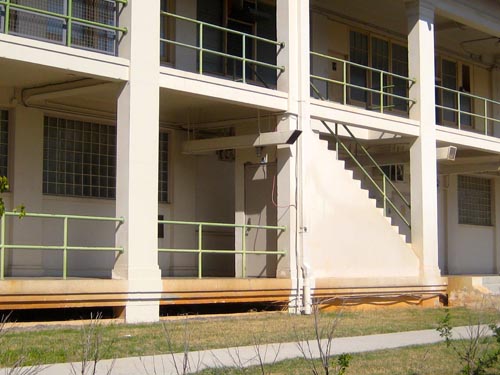
(The entrance to The Dungeon is down the stairs behind the steel door.)
So that is where the evening went, to the place and time I have often thought about, particularly on a Sunday duty day heading over to Ford Island and sliding past the Arizona Memorial on the ferry.
Anyway, this isn’t intended to be an account of the attack, nor is it getting me any closer to the subject of how Brian’s Dad solved one of the problems about the invasion of Okinawa- and the prospects for the even more ambitious landings that it was going to take to seize the Home Islands.
But I was sitting with my second cup of coffee, thinking about beach gradients, and realized I had to take a little necessary diversion this morning. Something about new retired ID cards- I won’t fuss with you about it. The new ones do not have our social security numbers on them- or, better said, the numbers are embedded in the bar code on the back or something- and who would care, really?
Except we have to. As part of beefed up security for military installations, there is going to be a new access process which requires the retired crowd to enter a four digit pin, and that is the purview of the Base Provost Marshal, who has a policy that the old style ID cards can’t be used. Something about identity theft. Heck, they used to make us print our Social Security number on our checks.
So, imagine that no one really knows this is coming, and there are tens of thousands of old farts out here who will only become aware of this new requirement when they are really urgently trying to get groceries at the Commissary or liquor at the Class Six Store, and then thousands of them descending at once of the Pass and ID office where there are three- count ‘em three- dedicated Army civilians to attend to the issuance of new cards.
Anyway, I was only being mildly ironic. The Government is open today despite the lingering effects of the snow and I decided to try to claw my way over and be there when the Pass and ID office opened at 0800. I was prepared to make a couple runs on it, but the bad roads kept a lot of folks home, the Army civilians showed up for work, and getting the new ID card was only about an hour long inconvenience.
The Provost Marshall was a little slower, but both offices now have my fingerprints and signature facsimiles. Considering what else they have on us, I guess I should be grateful it is just that.
I had to smile when I read about Jasper’s arrival on the base in the middle of the attack on Pearl Harbor. The sentry just waved him in.
More about beaches, and the sands of Iwo Jima tomorrow.
Copyright 2015 Vic Socotra
www.vicsocotra.com
Twitter: @jayare303
The Bomb Plot
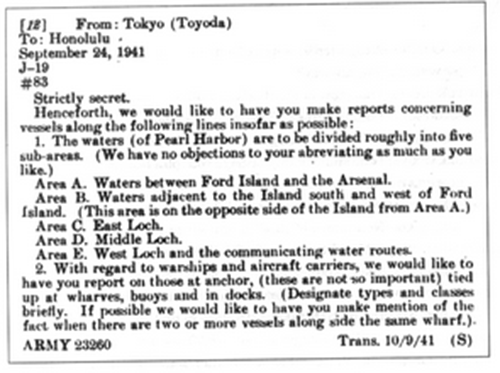
We got snow last night, the most accumulation of this winter, and Washington is Predictably Paralyzed. Willow is closed for an unprecedented second night in a row, and I officially have cabin fever. In the meantime, the memories of the placid waters of Pearl Harbor will not leave me alone. This morning it was the Bomb Plot message.
That is the one that might- or might not- have provided the advance information that the Japanese were interested in the precise locations of the American fleet. It might- or might not- have resulted in a different outcome in the attack. Some say that if the fleet was at sea, and might have tried to engage the attacking Japanese and been sunk in deep water, with thousands more casualties, and the proud ships lost forever, not salvaged as they were.
I got a note a week or so ago from a documentary filmmaker in the UK who is married to a pal who is a journalist based in the UK. Vicki Barker is the voice I trust on the CBS radio network. Her husband is interested in doing a documentary on the appalling way that Admiral Husband Kimmel, commander of the Pacific Fleet, and Lt. General Walter Short were hung out to dry in the wake of the disastrous attack on Pearl Harbor.
As I have told you (over and over) I lived and worked in the buildings that survived the Day of Infamy, and I was fortunate to have been a drinking buddy and tipsy Boswell to RADM Donald “Mac” Showers, the last of the JN-25 code-breakers at Station HYPO in Pearl.
My stories are sincere, but were never intended to be documentary history. I always liked to get to the loopy aspects of history- like, what was the party like at the quarters of chief codebreaker Joe Rochefort after the amazing results of the battle of Midway became known? (Answer: It was a good one).
Elliot Carlson is a professional historian who was working on his extraordinary biography of Rochefort through the same period, and detailed the scandalous story of Joe’s removal from command of HYPO by ankle-biting careerist hacks in the moment of his greatest triumph.
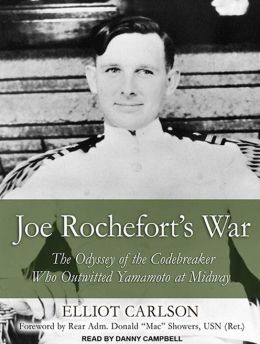
There is still a lot of emotion in all this. I know a pompous jackass here in town who was going around trying to discredit the story of how Joe’s band of Japanese linguists and cryptologists identified the target of the attack on Midway.
As you may recall, ENS Mac Showers was sitting at his desk in the Dungeon when Jasper Holmes outlined his scheme to tell the Commander at Midway (by way of secure submarine cable) to report by unencrypted radio that the fresh water plant on the coral atoll was malfunctioning. Holmes said that when the Japanese copied the radio transmission, it might reveal the identity of the target for the coming attack, and permit decisive action by the American Fleet.
Joe Rochefort liked the idea, and it worked. Within a few days, an encrypted Japanese message was de-coded that revealed the target- “AF”- was having fresh water problems.
It wasn’t perfect intelligence, but that is about as good as it gets in the world of COMINT. Joe was wary of the testy relations he had with the radio intelligence people back in Washington. He didn’t want the conclusion of the elegant subterfuge to be compromised by suspicion of who figured it out. So he provided the information to the Fleet Radio Unit in Melbourne, Australia, (FRUMEL) to have them report it.
Joe had a sign behind his desk that read: “There is no limit to what you can do, so long as you don’t care who gets the credit.” And so, sixty years after the fight, people were still fighting about stealing credit for what Jasper and Joe did in the basement of the 14th Naval District.
With things like that going on, Elliot relied heavily on Mac’s razor-sharp recollections to keep things straight. We are still attempting to get Mac’s 26-hour oral history transcribed and declassified- money and personnel bandwidth has been a challenge but we continue to press.
Elliot’s interviews with Mac were conducted in a much more focused manner than the ones I was doing, but they were complementary in nature.
I have asserted that the real villain in all this was Admiral Richmond Kelly “Terrible” Turner, who had been Chief of War Plans at Main Navy before the war had been instrumental in denying Hawaii access to the high-level Japanese Diplomatic messages in the Purple intelligence stream. That, and the famous Bomb Plot message are described In “Joe Rochefort’s War.”
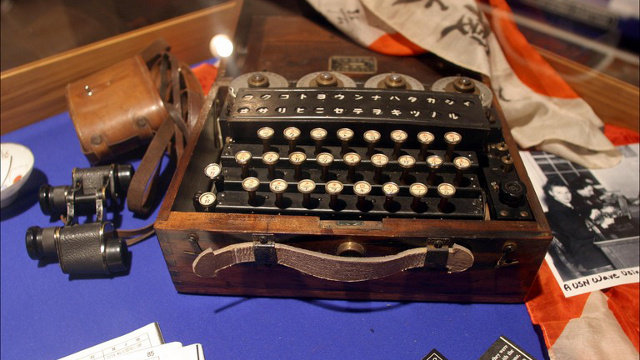
(A rare surviving example of a Purple enciphering machine. Image National Cryptologic Museum).
The Bomb Plot message is presented on page 154 and onward in the book. The question from the filmmaker was about exactly that. I wrote him back that “Arlington Hall Station (across from where I now live) was where the Army conducted its code-breaking. Their charter- and part of the division of labor with Navy- was to attack the Japanese high-level diplomatic code (Purple) as well as less important cypher systems used by the Japanese diplomatic corps.”
HYPO’s mission was only to track Japanese Naval ships. The Bomb Plot message was in a different cypher system than Purple, known as “J-19,” and was considered a secondary priority to breaking Purple traffic. The message had originally been copied on 24 September at the Army intercept site at Fort Shafter on Oahu. They lacked translators and machine support at Monitoring Station-5 (MS-5), and so the cable in question was shipped back to Washington for processing.
According to Elliot, the message was eventually deciphered a few weeks later and circulated to the Army and Navy Radio Intelligence brass. They determined the request for detailed anchorage positions was routine and the message was then filed away without action.
It did not come to light until the Pearl Harbor inquiries were held- the first in the wake of the attack, and the second, more elaborate one, after the war was over and the sense of urgency slightly less.
Later, when the existence of the messages were revealed, Rochefort himself was not confidant that he would have recognized the Bomb Plot message as significant. He remarked that he might have just chalked it up to the obsessive nature of Japanese collection philosophy.
That was emphatically not true for Admiral Husband Kimmel and Lt. Gen. Short were, since they had already been railroaded and scapegoated. Both were back in Washington before the existence of the Bomb Plot message was revealed to either. Eddie Layton would probably have been the one to bring it to Kimmel as his Fleet Intelligence Officer, but it never made it back to Hawaii.
Nor did the high level Japanese diplomatic traffic transmitted in the Purple system. Richmond Kelly Turner made sure those messages did not get to Admiral Kimmel- including the ones that directed Japanese diplomatic staff to have things wrapped up by the end of November 1941. The Kido Butai, the IJN Main Body, sortied for Pearl on the 26th of that month.
At the dawn of the age of machine encryption, special machines had been constructed to assist the laborious process of breaking the contents of the messages- there are some great stories to tell about black-bag jobs and the like conducted by Naval Intelligence to enable the penetration of the codes. Station CAST in the Philippines had one. Station NEGAT in Washington had one.
The one intended for Pearl was in Bletchley Park in the UK. There is a story about that, too, and maybe we will get back to Beach Gradients one of these mornings soon.
But if anyone tells you that Joe Rochefort was wrong, or that the guys in Australia had anything to do with Jasper Holmes and his great idea, just tell them they are pompous windbags.
Oh, and it is good to have friends. Thanks to the m , I can give you a look at some Great Americans who got passed over yesterday:
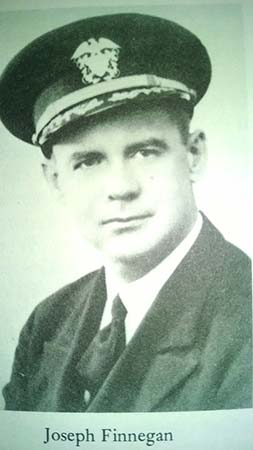
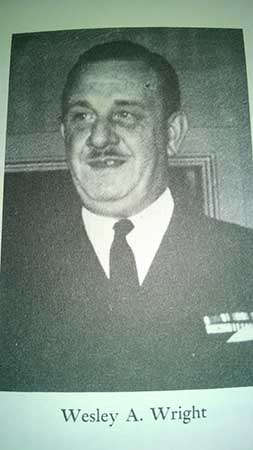
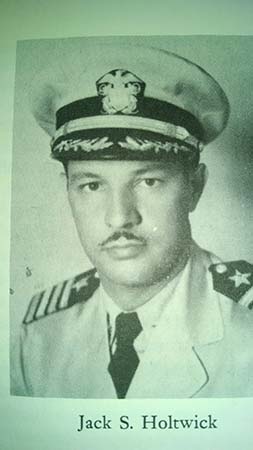
Copyright 2015 Vic Socotra
www.vicsocotra.com
Twitter: @jayare303
Pass Overs
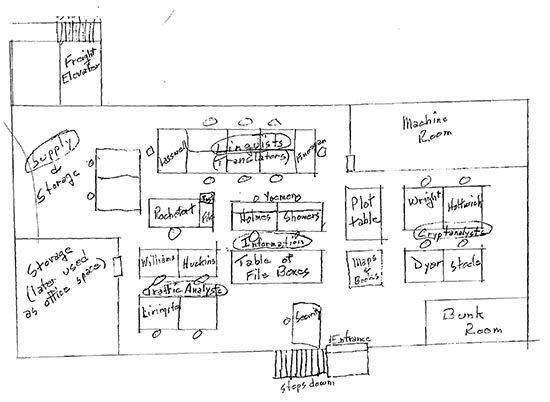
(Mac Shower’s hand-drawn diagram of The Dungeon in the basement of the 14th Naval District HQ in Pearl Harbor. Collected by renewed Naval historian Dr. Dave).
“The fate of the nation quite literally depended on about a dozen men who had devoted their lives and their careers, in peace and war, to radio intelligence.
Eight of these men worked in the basement of the 14th Naval District Administration Building.”
“Seven were naval officers and one was a Marine officer. Of the seven Navy officers, four had been passed over for selection. The other three received their promotion to Lieutenant Commander (04) a few months prior to the war.
The officer-in-Charge was Commander J. J. Rochefort, who had been first passed over in selection for Commander. Without his inspiring leadership, technical competence, unselfish devotion to duty and his personal example of untiring effort, it is doubtful that the full result could have been achieved.”
– CAPT C. H. McMorris, Chief of Staff, US Pacific Fleet, 1946
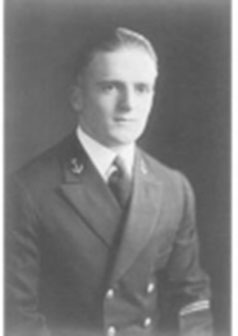
(Then Midshipman Tex Biard.)
See, there was a time when the greatest group of hard-working heroes ever assembled in my line of work were just some guys for which the Navy had no particular use. There were skills that deserved promotion, and having spent years overseas learning the Japanese language and more importantly, how the Japanese thought wasn’t as important as Fleet Gunnery on the battleships of the line. Funny how that works, and nothing has changed.
I wish I could have talked to Tex Biard, as a friend of mine did before the Captain passed on in 2007. Tex was in the same sort of position that my Great-Great Uncle Patrick was; as the last man of his unit surviving, whatever he said the truth was about the past, there was no one left to disagree. Tex was one of three remaining officers from Station HYPO in Pearl Harbor when he rated their talents in 2002 . What he remembered had to be the truth because he was there. I mentioned him yesterday; Tex was at HYPO for about six months, from Fall of 1941 to Spring 1942.
He made his assessment of the contributions of the gifted group of passed-over officers who made such a dramatic contribution to Victory in the Pacific. He mentions, but gives short shrift to these three officers:
Lieutenant Commander Thomas A. Huckins USNA Class of 1924, “Valuable radio traffic analyst.”
Lieutenant John A. Williams USNA Class of 1928. “Valuable radio traffic analyst working with Huckins.”
Lieutenant Commander Jack S. Holtwick USNA Class of 1927 “A man of many and varied talents. He ran our IBM machines at that particular time – and did so superbly.”
I decided to put them first, since I think Tex was back in the Fleet by the time things were getting hot and heavy for the Battle of Midway.
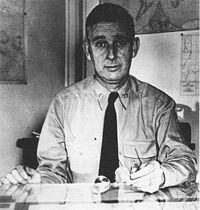
Tex never-the-less went on to make his assessment of the rest of the team, saying: “Top honors indisputably must go to our brilliant officer-in-charge, Commander Joseph J. Rochefort.” Tex called him “intuitive, quick, sharp thinking, blessed with a fantastic memory of almost total recall, and was an inspiring leader for his miracle-producing associates.” In the moment of his greatest triumph, Rochefort was fired not so much for disagreeing with Station NEGAT (OP-30G on Nebraska Avenue back in Washington) but for being right. There were powerful equities at stake, after all, and no one likes the guy who calmly provided the information that enabled Admiral Chester Nimitz to ambush and dismember the Japanese Fleet.
(No Photo Available)
Then there was Lieutenant Commander Joseph Finnegan, U.S. Naval Academy Class of 1928, Tokyo-trained Japanese linguist, a man who Tex described as “usually gregarious but sometimes reclusive, intuitive, brilliant, volatile, and a professional U.S. Irishman from Boston.”
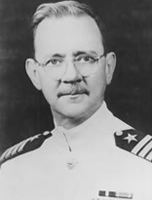
On an almost equal level with Finnegan, but always quiet and never ostensibly spectacular was the steady, unimpressive [Lieutenant] Commander Thomas H. Dyer, U.S. Naval Academy Class of 1924. He helped keep things organized and in working order while we in the code-solving field were just too busy to tend to such menial –but vitally important — tasks.
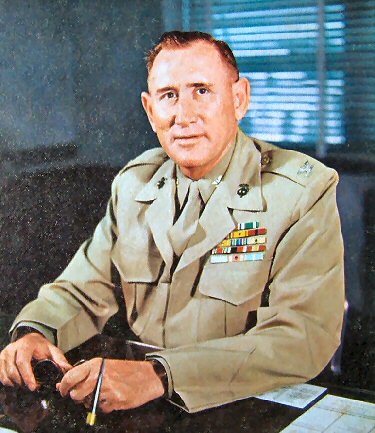
Major Alva B. (Red) Lasswell. If Joe Finnegan was our spectacular Babe Ruth, Red Lasswell was our steady, dependable, long-enduring, right-as -rain Lou Gehrig. It was hard to see Red because of Joe, but without Red, Joe would have been far less the hero. When Joe went wild and had to be pulled back to earth Red could do the job without upsetting the house that Finnegan and Rochefort built. Red did not want to be a code-breaker. His favorite game was top-notch competition rifle shooting.
(No Photo)
(Lieutenant] Commander Wesley A. Wright, U. S. Naval Academy Class of 1926, better known as “Ham”. “Ham” was an almost look- alike for Wallace Beery, a film actor of the 1920’s and 1930s. “Ham” worked with and under Tom Dyer, keeping things in order and solving many knotty problems in the code-breaking area. It was “Ham” Wright who, together with Joe Finnegan, engineered the solution to the extremely important month-and-day-of-the-month (usually called “date time”) code group. This was a “garble cipher” which, when solved by Joe and “Ham”, finally gave Admiral Nimitz the exact time (day of the month) sequence.
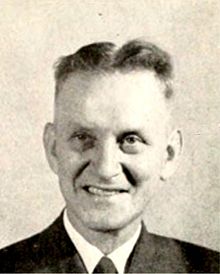
Tex did not mention the second senior man in HYPO, which is curious. Wilfred “Jasper” Holmes graduated from the US Naval Academy, Annapolis, 1922, and had a masters degree in engineering from Columbia University. He served as a line officer in the Navy, in submarines. He wrote submarine adventure stories for the Saturday Evening Post under the pen name Alec Hudson. He retired from the Navy in 1936 because of arthritis of the spine, and joined the faculty of the University of Hawaii. In 1941 Captain Holmes was recalled to duty and assigned to Station HYPO. By May 1942 US Naval Intelligence knew that the Japanese were planning an attack at a spot they called AF, but did not know what AF signified. Joe Rochefort thought AF was Midway Island. Holmes had the idea of faking a water supply failure on Midway. He suggested using an unencrypted emergency warning, in the hope of provoking a Japanese response, thus establishing whether AF was Midway. Holmes’ ruse worked and led to the Japanese defeat at the Battle of Midway.
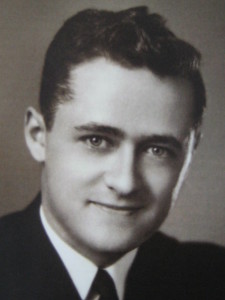
Nor did Tex mention ENS Donald “Mac” Showers, who worked directly for Jasper Homes and sat next to him in the Dungeon. Mac had been commissioned on Sept. 12, 1941. Soon after his commission, he reported to Seattle for Counter-Intelligence training, and served as the Public Affairs Officer at the 13th Naval District at Seattle. His graduating class was assigned orders in alphabet order, the first half of the class was ordered to Manila, which would shortly be captured by the Japanese. The Second half of the class got orders to Hawaii, where they arrived by ship in February of 1942. 14th Naval District Chief of Counter-Espionage LT Stephenson informed him he useful only for filling a vacant requirement at the Fleet Radio Unit at Pearl Harbor. By the spring of 1942, Rochefort’s staff, which included Showers, was making positive strides toward deciphering the Japanese Navy’s crucial next move.
Tex Biard was already on board the USS Yorktown, so there is more going on in his recollections than I can penetrate today. I think it may be a way of putting spin on the past, and settling old scores. But I hesitate to open up old cans of worms, though it is clear when the scope of the victory at Midway was clear, Joe Rochefort was relieved by Washington and assigned to command a floating dry dock that someone had some important baggage they did not want unpacked.
Professional jealousy? The establishment of the Naval Security Group after the war? Mac often told me that he had been on a walk at Arlington Hall Station when he recommended that Rufus Taylor, future director of Naval Intelligence and Deputy Director of CIA, get out of Cryptology and get into Intelligence.
Aren’t you proud of me? I managed to not mention those careerist Redman Brothers even once. Oops.
And once more, I wish I had known what to ask when I could.
Copyright 2015 Vic Socotra
www.vicsocotra.com
Twitter: @jayare303
